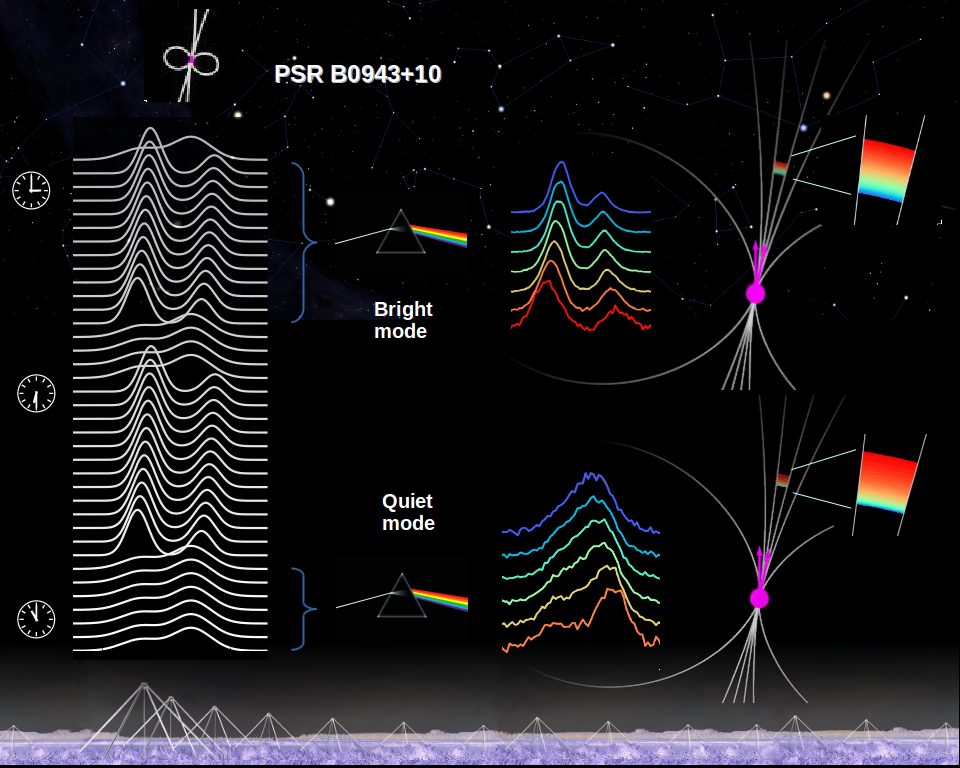Daily Image
27-08-2014Mode-switching pulsar B0943+10 holds yet another surprise
| Submitter: | Anna Bilous |
| Description: | PSR B0943+10 is one of the best examples of the rare class of mode-switching pulsars. Unlike most of the pulsar population, B0943+10 has two stable modes of radio emission, each with its own distinct radio profile morphology and sinlge-pulse behaviour. The pulsar switches between "Bright" and "Quiet" modes once every few hours and the transition takes less than a few stellar rotations. The switch in the radio modes is also accompanied by changes in the X-ray emission mode, which was discovered using LOFAR, GMRT and XMM-Newton (Hermsen et al. 2013). This paper demonstrated that mode switching is a rapid and global transformation of the magnetosphere and its broadband emission. The exact nature of this transformation, however, is still far from being well understood. With the goal of better illuminating the difference between the two modes, we carried out sensitive, multi-hour LOFAR LBA observations as part of Cycle 0 (Bilous et al 2014). Below 100 MHz the frequency-dependent changes in the pulse-profile morphology are the largest and effects too subtle to see at higher frequencies become readily evident. Luckily, B0943+10 has one of the steepest spectra of all known radio pulsars, and is easily detected in the LOFAR low-band. We found that in both modes the profile evolution with frequency can be well explained by "radius-to-frequency mapping" (i.e. the emission height grows towards lower emission frequency, as depicted by the colours above) at altitudes within a few hundred kilometres of the stellar surface. Also, despite the seemingly different behaviour of the profiles, we find that radio emission comes from virtually the same range of heights if both modes originate at the same magnetic latitude. Quite surprisingly, and perhaps more interestingly, we also discovered that during the Bright mode the average profile shifts gradually towards later spin phase and then resets its position at the next Quiet-to-Bright transition. This is illustrated above (left-hand side), with the magnitude of shift amplified by a factor of 4 for clarity. Such a delay is puzzling as it is frequency-independent and much too large to be due to changing spin-down rate. One possible explanation for the delay is a variation of the accelerating potential inside the polar gap, which then causes changes in the corotation velocity of the plasma in the open field line region. This explanation connects the observed profile delay to the gradually evolving subpulse drift rate, which depends on the gradient of the potential across the field lines. It shows that the Bright mode is not completely static but evolves in a systematic and reproducible way before suddenly switching back to the Quite mode. We hope that this added piece in the puzzle will help us gain a better understanding of the underlying physical mechanism behind pulsar mode switching. |
| Copyright: | Anna Bilous, LOFAR PWG |
| Tweet |  |
